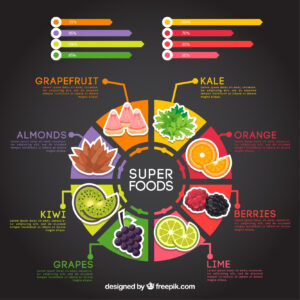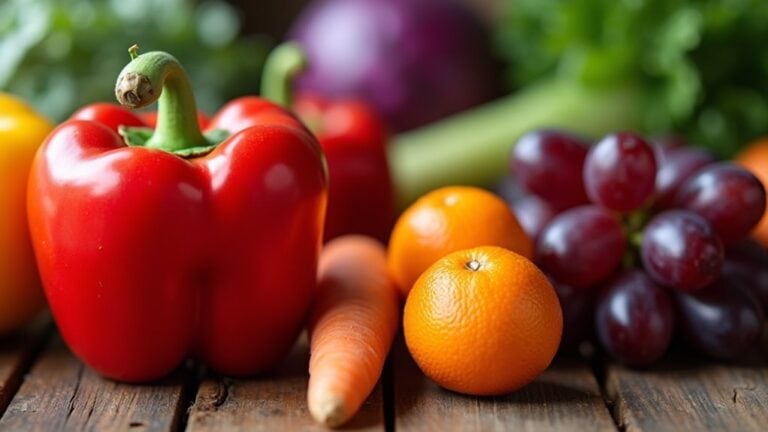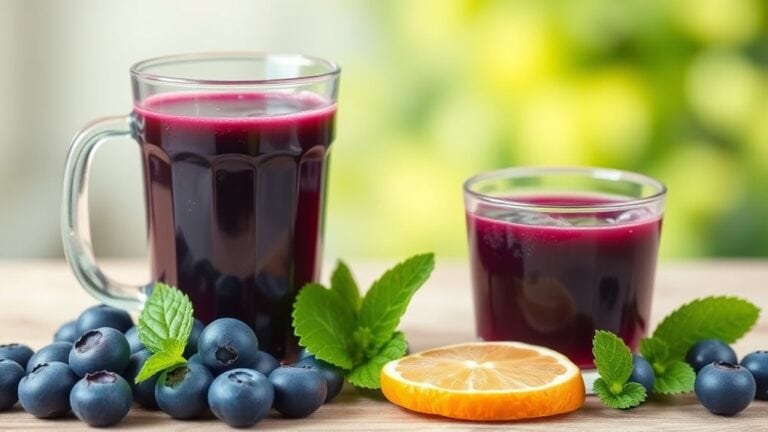Purines are a type of chemical compound found in many foods that can have an impact on our health. They are broken down by the body into uric acid, which can lead to gout and other health conditions if levels become too high.
If you are concerned about your purine intake, it is helpful to know which foods contain higher levels and which ones are lower. The following Purine Food Chart can serve as a guide when making dietary choices:
High-Purine Foods:
– Organ meats (liver, kidneys)
– Game meats (venison, pheasant)
– Seafood (anchovies, sardines, mussels)
– Gravy
– Beer and other alcoholic beverages
– Yeast products
Struggling with gout? A purine food chart can help you manage it. This guide will show which foods to avoid, eat in moderation, or include to control uric acid levels effectively.
Key Takeaways
- Managing gout effectively requires a low purine diet to reduce uric acid levels and prevent painful flare-ups.
- High purine foods, such as organ meats, certain seafood, and red meats, should be avoided, while low purine foods, including whole grains and low-fat dairy, should be incorporated.
- Lifestyle changes, including weight management, hydration, and limiting alcohol intake, are crucial for reducing the frequency of gout attacks and improving overall health.
Purines and Uric Acid
Purines are naturally occurring substances found in many foods and drinks, as well as within our own bodies. When these purines break down, they produce uric acid.
While uric acid is usually dissolved in the blood and eliminated through the kidneys, too much uric acid can build up and form sharp, needle-like crystals in the joints. This accumulation of uric acid crystals is what leads to the painful symptoms of gout.
High uric acid levels are a key factor in developing gout and can lead to recurring gout attacks, which are sudden and often debilitating flares of pain. It becomes imperative to manage gout by reducing the intake of high purine foods, which can significantly raise uric acid levels of uric acid.
A low purine diet can help lower uric acid levels and prevent future gout flares, making it a cornerstone of effective gout management.
High Purine Foods to Avoid:
Certain foods are notorious for their high purine content and should be avoided to manage gout effectively. Here are some examples:
- Organ meats: Liver, kidneys, and sweetbreads are extremely high in purines and should be avoided.
- Seafood: Herring, scallops, tuna, sardines, and anchovies can raise uric acid levels significantly.
- Red meats: Beef, lamb, and pork are high in purines and should be consumed sparingly.
- Turkey: Even though it’s lean, turkey is high in purines and should be avoided.
- Gravy and meat sauces: These contain high purine levels and can trigger gout attacks.
- Yeast and yeast extract: Rich in purines, these can lead to increased uric acid production.
Avoiding these high purine foods is crucial for managing gout symptoms and preventing flare-ups. Carefully selecting your food can significantly reduce the risk of gout attacks and improve your overall health.
Low Purine Foods to Include
In contrast to high purine foods, there are many low purine options that are beneficial for those managing gout. Whole grains like rice and pasta are excellent choices as they are generally low in purines and support overall health. Low-fat dairy products, such as skim milk, have been shown to help lower uric acid levels and reduce the frequency of gout attacks.
- Whole grains: Rice, pasta, and oats are low in purines and beneficial for a gout diet.
- Low-fat dairy: Skim milk, yogurt, and cheese can help lower uric acid levels and reduce gout attacks.
- Fruits and vegetables: Most are low in purines, making them excellent choices for a gout-friendly diet.
- Vitamin C-rich foods: Including citrus fruits and berries can help reduce uric acid levels.
Including these low-purine foods in your diet can help manage gout symptoms and prevent future flare-ups. A balanced diet rich in fruits, vegetables, and whole grains not only supports gout management but also promotes overall health and well-being.
Moderate Purine Foods: Eat with Caution
While some foods should be avoided and others embraced, there are also those that fall in between. These moderate purine foods can still be part of a gout-friendly diet, but portion control is essential to prevent gout flare-ups. Even foods with moderate purine content can contribute to increased uric acid levels if consumed excessively.
Certain types of seafood, such as shrimp, crab, and lobster, have moderate purine levels and should be eaten in moderation. Poultry, including chicken and duck, is also moderate in purines and should be consumed in controlled portions. Legumes, like lentils, beans, and peas, are nutritious but should be limited due to their moderate purine content.
Adding these foods to your diet in moderation allows you to enjoy a varied and balanced diet without worsening gout symptoms. Moderation is the key to managing gout effectively while still enjoying a wide range of foods.
Gout-Friendly Diet Plan
Crafting a gout-friendly diet plan goes beyond avoiding high purine foods; it involves a balanced approach to nutrition. A low purine diet effectively manages gout symptoms by reducing uric acid levels in the body. Integrating complex carbohydrates from fruits, vegetables, and whole grains supports overall health and keeps you feeling full and satisfied.
Consuming lean proteins like poultry, low-fat dairy, and legumes is beneficial for those managing gout. Limiting or avoiding alcohol, especially beer and spirits, is also recommended. Weight management is crucial, as losing excess weight can reduce the frequency of gout attacks and improve overall health.
A well-balanced diet for gout should focus on reducing purine intake while incorporating healthy foods, ensuring you get the nutrients you need without triggering gout symptoms. This holistic approach can help you manage gout more effectively and improve your quality of life.
Purine food chart
A purine food chart is an invaluable tool for managing gout. By categorizing foods into high, moderate, and low purine content, it provides a clear visual guide to help you make informed dietary choices.
High purine foods, such as red meats and certain seafood, are often illustrated in red on purine charts to indicate they should be avoided.
Low purine foods, like most fruits, vegetables, and whole grains, are typically marked in green, indicating they are safe for gout sufferers. Moderate purine foods are usually highlighted in yellow, suggesting that these foods can be consumed in limited quantities.
A purine food chart simplifies managing gout, helping you quickly identify which foods to include or avoid in your diet.
🟥 High Purine Foods (150–1000+ mg/100g) – Limit or Avoid
| Food Item | Purine Content (mg/100g) | Notes |
|---|---|---|
| Anchovies | 410 | High in both purines and sodium |
| Sardines (in oil) | 480 | Common gout trigger |
| Mackerel | 145–400 | Oily fish, limit intake |
| Liver (beef, chicken) | 300–400 | Organ meat, very high purines |
| Kidneys (lamb, pork) | 200–400 | |
| Sweetbreads | 520 | Thymus or pancreas |
| Game meats (venison, etc.) | 200–400 | Often overlooked high purine food |
| Mussels | 150–300 | Shellfish to avoid with gout |
| Roe (fish eggs) | 250–300 | High purine seafood |
| Yeast (baker’s & brewer’s) | 400–1000 | Especially problematic in extract |
🟧 Moderate Purine Foods (50–150 mg/100g) – Limit Intake
| Food Item | Purine Content (mg/100g) | Notes |
|---|---|---|
| Beef, Pork, Lamb (muscle) | 100–150 | Limit to small portions |
| Poultry (chicken, turkey) | 100–150 | White meat has slightly less |
| Shellfish (shrimp, crab) | 100–150 | Moderation is key |
| Asparagus | ~75 | Moderate for a vegetable |
| Cauliflower | ~70 | Vegetables are less risky overall |
| Spinach | ~60 | Often debated; okay in moderation |
| Peas, Lentils, Beans (dry) | 50–150 | Higher in purines, but plant-based |
| Oats | ~50 | Still fine in moderation |
| Mushrooms | ~60 | Moderate range |
🟩 Low Purine Foods (<50 mg/100g) – Safe to Eat
| Food Item | Purine Content (mg/100g) | Notes |
|---|---|---|
| Milk, Cheese, Yogurt | <10 | Dairy lowers uric acid |
| Eggs | 0–10 | Excellent protein source |
| Fruits (apple, banana, etc.) | <10 | All fruits are safe |
| Vegetables (most) | <50 | Except asparagus, spinach, etc. |
| Bread, Pasta, Rice | <20 | Choose whole grains if possible |
| Nuts and Seeds | <20 | Safe and healthy fats |
| Coffee and Tea | 0 | May help reduce uric acid |
| Water | 0 | Encouraged to help flush uric acid |
⚠️ Notes:
- Cooking method matters: Boiling can reduce purine content by leaching purines into water.
- Alcohol, especially beer, is high in purines (due to yeast) and raises uric acid. ( Never ever drinks Alcohol )
- Hydration is key for gout prevention.
Sample Menu for a Low Purine Diet
To make it easier to follow a low purine diet, here is a sample three-day menu that includes breakfast, lunch, and dinner suggestions.
- Day 1:
- Breakfast: Oatmeal with sliced peach and almond butter.
- Lunch: Greek yogurt paired with a salad.
- Dinner: Spinach and feta cheese omelet.
- Day 2:
- Breakfast: Cottage cheese with melon and bran cereal flakes.
- Lunch: Egg salad sandwich made with whole wheat bread.
- Dinner: Whole wheat pasta with cannellini beans and broccoli.
- Day 3:
- Breakfast: Whole grain cereal served with low-fat milk and strawberries.
- Lunch: Black bean soup garnished with fresh vegetables.
- Dinner: Vegetable burgers on whole wheat buns with sweet potato wedges.
This sample menu provides a variety of delicious and nutritious options that adhere to low purine guidelines, helping you manage gout effectively while enjoying your meals.
The Role of Hydration in Managing Gout
Hydration plays a crucial role in managing gout by helping to eliminate uric acid from the body. Drinking sufficient water aids the kidneys in excreting uric acid more effectively, thereby reducing the risk of uric acid crystal formation.
It is recommended that individuals with gout consume between eight to sixteen cups of fluids daily, with a significant portion being water. Consistent water intake helps maintain urinary pH levels that promote uric acid elimination and reduce the risk of gout flare-ups.
How Alcohol Affects Uric Acid Levels
Alcohol consumption, particularly beer, has been linked to increased uric acid levels, which can trigger gout attacks. Different types of alcoholic beverages can have varying effects on uric acid levels, with beer often having the most significant impact.
- Beer: Known to significantly raise uric acid levels and is commonly associated with gout attacks.
- Spirits: Can inhibit the kidneys’ ability to clear uric acid, potentially leading to higher concentrations.
- Moderate consumption: Even moderate alcohol intake can lead to recurrent episodes of gout.
Limiting or avoiding alcohol is essential for managing gout symptoms and preventing flare-ups. Informed choices about alcohol consumption help manage uric acid levels and reduce the risk of gout attacks.
Anti-Inflammatory Foods for Gout Relief
Certain foods possess anti-inflammatory properties that can help alleviate gout symptoms and reduce the frequency of attacks. Cherries, for example, are noted for their potential to reduce uric acid levels and possess anti-inflammatory properties.
- Cherries and berries: These fruits have been found to potentially lower the frequency of gout attacks due to their anti-inflammatory effects.
- Olive oil: Recognized for its anti-inflammatory properties, which can aid in alleviating gout symptoms.
Adding these anti-inflammatory foods to your diet can significantly aid in managing gout symptoms and improving overall health.
Frequently Asked Questions
What foods should I avoid to manage gout?
To effectively manage gout, it is important to avoid high purine foods, including organ meats, certain seafood, red meats, and gravy. Reducing these foods can help lower uric acid levels and minimize gout flare-ups.
What are some low purine foods I can include in my diet?
Incorporating whole grains, low-fat dairy products, most fruits and vegetables, and foods rich in Vitamin C into your diet will help you manage purine intake effectively. These options are nutritious and can provide a well-balanced diet.
How does alcohol affect gout?
Alcohol, particularly beer, increases uric acid levels and can provoke gout attacks; therefore, it is advisable to limit or avoid alcohol consumption to manage the condition effectively.
How important is hydration in managing gout?
Hydration is crucial in managing gout, as adequate water intake aids the kidneys in excreting uric acid, thereby minimizing the risk of uric acid crystal formation in the joints. Staying well-hydrated can significantly contribute to better health outcomes for those with gout.
What lifestyle changes can help manage gout?
To effectively manage gout, incorporating weight loss, regular physical activity, limiting sugary beverages, and quitting smoking is essential. These lifestyle changes not only help reduce the frequency of gout attacks but also enhance overall health.





